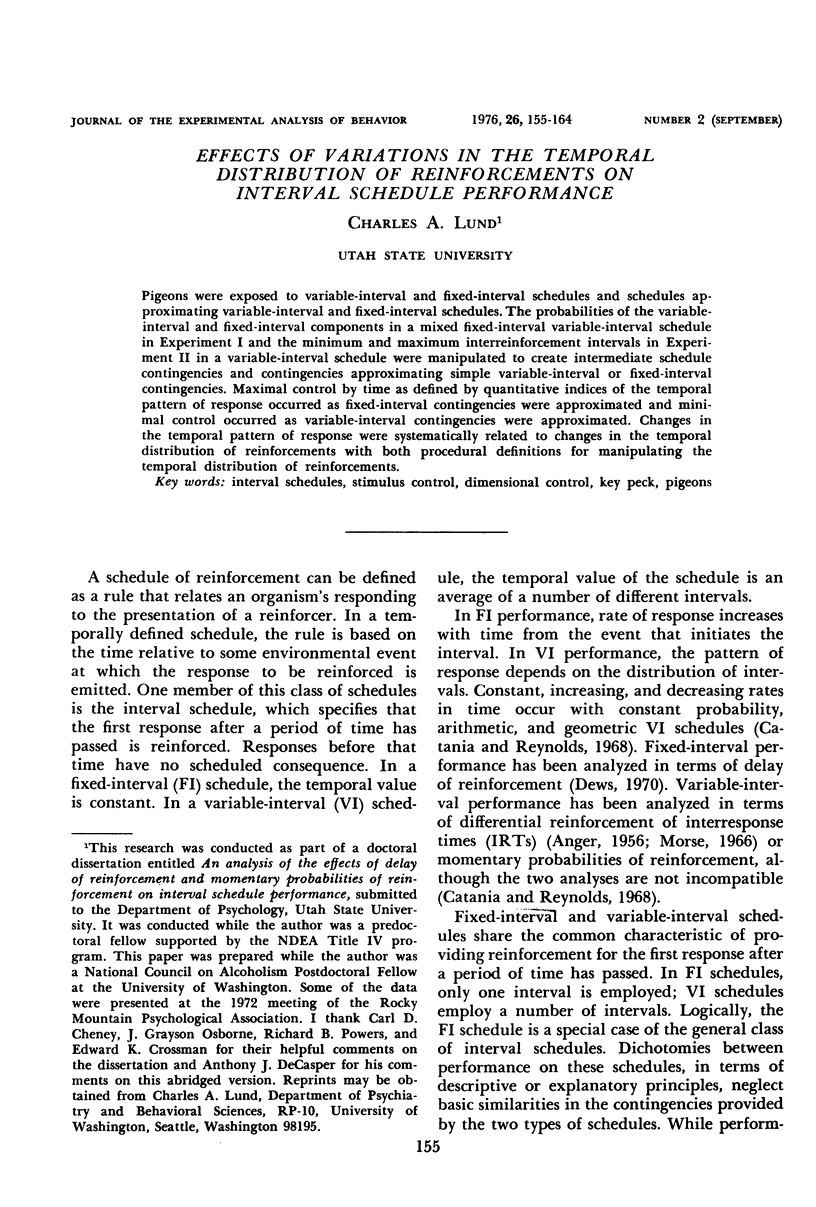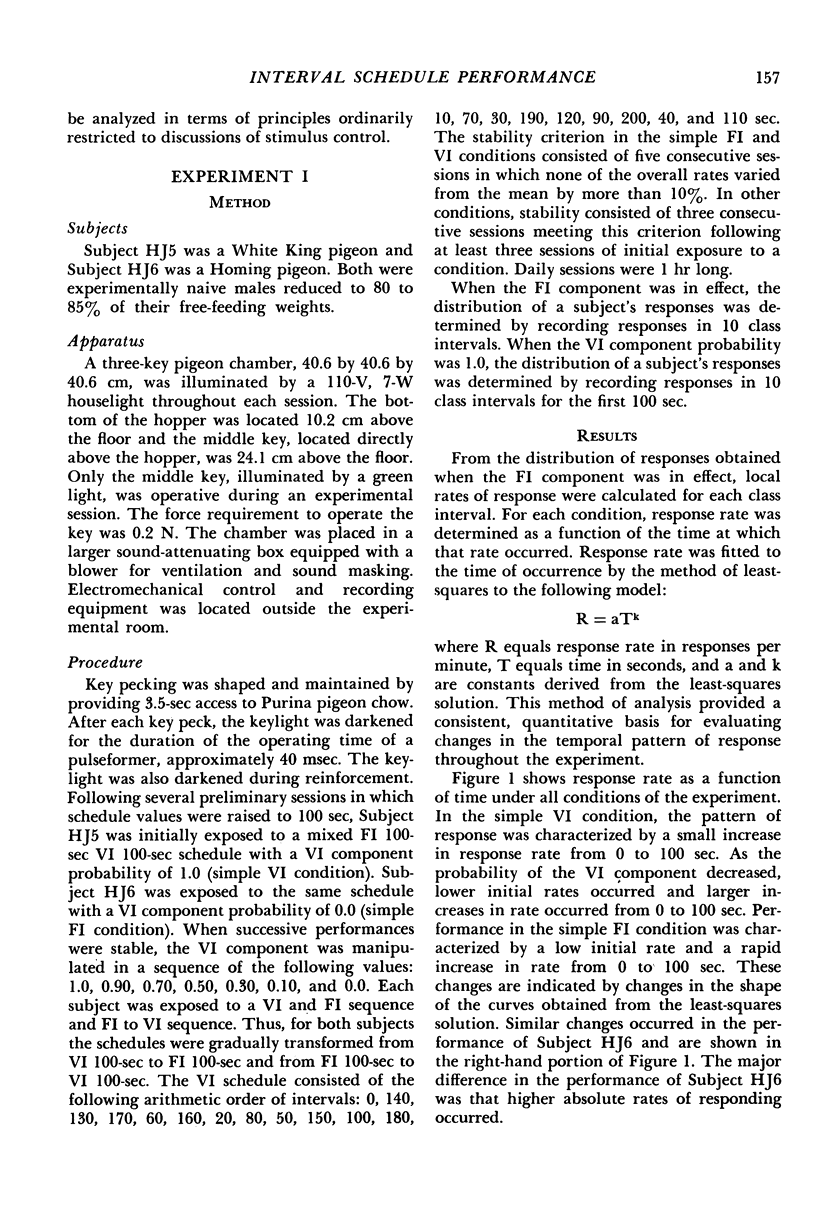Abstract
Pigeons were exposed to variable-interval and fixed-interval schedules and schedules approximating variable-interval and fixed-interval schedules. The probabilities of the variable-interval and fixed-interval components in a mixed fixed-interval variable-interval schedule in Experiment I and the minimum and maximum interreinforcement intervals in Experiment II in a variable-interval schedule were manipulated to create intermediate schedule contingencies and contingencies approximating simple variable-interval or fixed-interval contingencies. Maximal control by time as defined by quantitative indices of the temporal pattern of response occurred as fixed-interval contingencies were approximated and minimal control occurred as variable-interval contingencies were approximated. Changes in the temporal pattern of response were systematically related to changes in the temporal distribution of reinforcements with both procedural definitions for manipulating the temporal distribution of reinforcements.
Keywords: interval schedules, stimulus control, dimensional control, key peck, pigeons
Full text
PDF









Selected References
These references are in PubMed. This may not be the complete list of references from this article.
- ANGER D. The dependence of interresponse times upon the relative reinforcement of different interresponse times. J Exp Psychol. 1956 Sep;52(3):145–161. doi: 10.1037/h0041255. [DOI] [PubMed] [Google Scholar]
- Blough D. S. Generalization gradient shape and summation in steady-state tests. J Exp Anal Behav. 1969 Jan;12(1):91–104. doi: 10.1901/jeab.1969.12-91. [DOI] [PMC free article] [PubMed] [Google Scholar]
- Catania A. C., Reynolds G. S. A quantitative analysis of the responding maintained by interval schedules of reinforcement. J Exp Anal Behav. 1968 May;11(3 Suppl):327–383. doi: 10.1901/jeab.1968.11-s327. [DOI] [PMC free article] [PubMed] [Google Scholar]
- Dysart J., Marx M. H., McLean J., Nelson J. A. Peak shift as a function of multiple schedules of reinforcement. J Exp Anal Behav. 1974 Nov;22(3):463–470. doi: 10.1901/jeab.1974.22-463. [DOI] [PMC free article] [PubMed] [Google Scholar]
- HEARST E., KORESKO M. B., POPPEN R. STIMULUS GENERALIZATION AND THE RESPONSE-REINFORCEMENT CONTINGENCY. J Exp Anal Behav. 1964 Sep;7:369–380. doi: 10.1901/jeab.1964.7-369. [DOI] [PMC free article] [PubMed] [Google Scholar]
- Hearst E., Besley S., Farthing G. W. Inhibition and the stimulus control of operant behavior. J Exp Anal Behav. 1970 Nov;14(3 Pt 2 Suppl):373–409. doi: 10.1901/jeab.1970.14-s373. [DOI] [PMC free article] [PubMed] [Google Scholar]
- Pierrel R., Sherman J. G., Blue S., Hegge F. W. Auditory discrimination: a three-variable analysis of intensity effects. J Exp Anal Behav. 1970 Jan;13(1):17–35. doi: 10.1901/jeab.1970.13-17. [DOI] [PMC free article] [PubMed] [Google Scholar]


